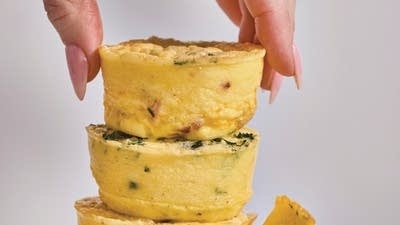
Keith Wilson is the curator of the exhibit "Ancient Chinese Jades and Bronzes" at the Smithsonian's Freer Gallery of Art in Washington, D.C. The exhibit includes a variety of Chinese wine vessels from the period between 1200 and 1000 B.C.E. that were used for ceremonial banquets. "We think that the different shapes probably reflect the ritualization of alcohol consumption," he says.
[Pictured above: ritual wine vessel (gu), lidded ritual wine container (you) with birds, and ritual wine warmer (jia) with taotie and birds.]
Lynne Rossetto Kasper: Wine in ancient China is probably very different from our idea of wine today. How early was this, and when and where?
 Keith Wilson
Photo: Smithsonian’s Freer and Sackler Galleries
Keith Wilson
Photo: Smithsonian’s Freer and Sackler Galleries
Keith Wilson: Chinese were certainly fermenting grains already by the Stone Age. The vessels that are on display in the Freer were generally made around the period between 1200 and 1000 B.C.E., so a bit later than the Stone Age.
They represent a variety of shapes. We think that the different shapes probably reflect the ritualization of alcohol consumption. The vessels were used for very highly organized ceremonial banquets that were offered to deceased ancestors.
First of all, I should say something about the meaning of wine. The word is so broad. This isn't a fruit-based -- especially not a grape-based -- wine like is the most common today in the West. In Chinese antiquity, it most likely was fermented grains. Therefore, we should think of it more on parallel with something like sake, which is distilled rice wine. But they were also using millet and sorghum, other kinds of grains.
They were probably made shortly before the event itself. The presentation of the ritual and the use of the wine in that context apparently involved a number of different steps, because we have different shapes of containers that seem to be involved in the ritual.
There were wine buckets, in many cases with lids, so we know that they were probably used to store the wine before the event. The lid helped to keep the liquid free of impurities. Often these containers with lids have bail handles like a pail, so we can imagine that they were made to actually carry the wine to the event.
Then there are large tripods, vessels that have three legs, generally with a spout. These seem to have been made for warming the wine. So again, very different from our concept of wine consumption today.
Then service vessels, cups of various shapes and sizes.
The ritual itself would begin with offerings to the deceased; the offerings were both liquid, alcohol and food. Then after the spirits had been fed so to speak, the participants, the officiants in the ritual itself, would probably have consumed the things that had been offered to the spirits.
 Ritual wine vessel (jue) with cover
Photo: Smithsonian’s Freer and Sackler Galleries
Ritual wine vessel (jue) with cover
Photo: Smithsonian’s Freer and Sackler Galleries
LRK: Who would have been performing these ceremonies? Who would have partaken of them?
KW: Our best guess is that rituals like this were based on clan groups. The vessels themselves being made out of very precious materials, they would have been extremely prized commodities. So it may have been that elders actually officiated at the event itself. China, even then, was very much a society based on filial piety (respect for elders). So one can imagine that they would have been the officiants.
LRK: Some of these vessels that you have illustrated are in the shape of fantastical animals. The detail is also really striking.
KW: The pieces that we're talking about are all cast bronze. Many of them are quite heavy, anywhere from 5 to 15 pounds, and that's without the liquid inside. Even though they may not be massive in scale, they are monumental in feeling.
Generally, the outsides of the vessels are completely decorated, often with symmetrically organized frontal masks that look a little bit like an animal you're looking at head-on. Often the primary elements of those designs -- the eyes, the horns, the snout, the mouth -- are raised slightly in relief above the surface of the vessel. There are very fine background patterns so that there's a kind of texturing that helps to offset the pattern on the surface.
 Ritual wine container (hu) with masks
Photo: Smithsonian’s Freer and Sackler Galleries
Ritual wine container (hu) with masks
Photo: Smithsonian’s Freer and Sackler Galleries
LRK: These are works of art.
KW: Absolutely. A friend of mine says, "No Chinese object was ever intended to be on display in a museum." Chinese objects are very functionally inspired. But because the particular pieces that we're talking about today are just so remarkable, they've been treasured and collected in China for centuries, and in the West, certainly for the last 150 to 200 years.
Before you go...
Each week, The Splendid Table brings you stories that expand your world view, inspire you to try something new, and show how food connects us all. We rely on your generous support. For as little as $5 a month, you can have a lasting impact on The Splendid Table. And, when you donate, you’ll join a community of like-minded individuals who love good food, good conversation, and kitchen companionship. Show your love for The Splendid Table with a gift today.
Thank you for your support.
Donate today for as little as $5.00 a month. Your gift only takes a few minutes and has a lasting impact on The Splendid Table and you'll be welcomed into The Splendid Table Co-op.




